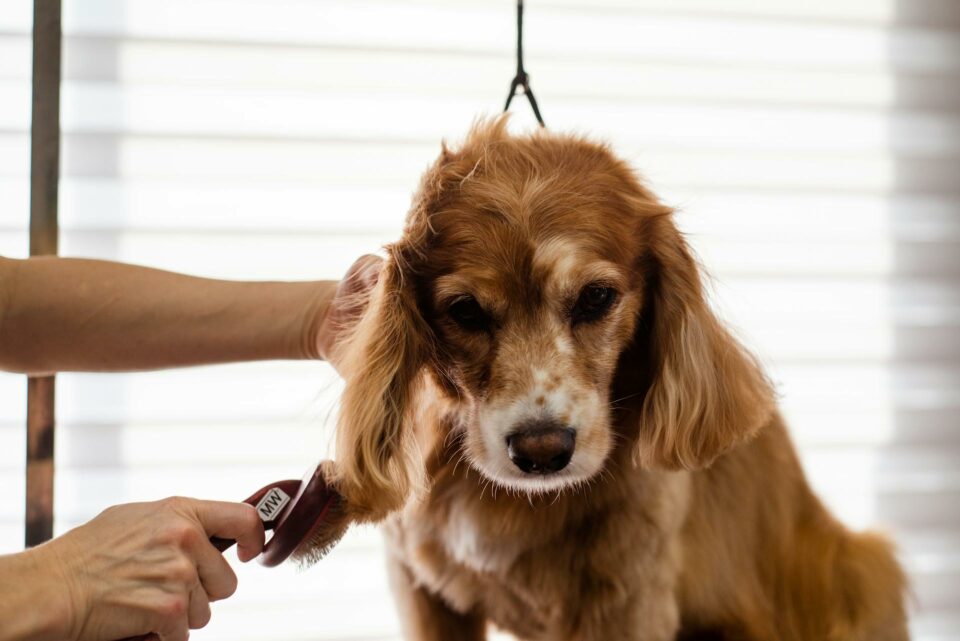Treating Hot Spots on Dogs: Effective Solutions
Hot spots on dogs, also known as acute moist dermatitis, are areas of inflamed, infected skin that can cause immense discomfort and itching for your canine companion. Understanding how to identify and treat these lesions is crucial for dog owners to ensure quick relief and prevent further complications. The article ‘Treating Hot Spots on Dogs: Effective Solutions’ delves into the symptoms, causes, and both home and veterinary treatments to manage and prevent hot spots effectively.
Key Takeaways
- Hot spots require prompt attention as they do not heal on their own and can worsen without treatment, potentially leading to secondary bacterial infections.
- Veterinary interventions often include a combination of oral antibiotics, anti-itch medications, and topical treatments, along with preventive measures such as cones to avoid further irritation.
- Home care can supplement veterinary treatment, with options like cool compresses, mild antiseptics, and topical creams, but it’s essential to consult a vet before applying any home remedies.
Identifying and Understanding Hot Spots on Dogs

Recognizing the Symptoms of Hot Spots
When your dog starts showing signs of discomfort, it’s crucial to recognize whether they are suffering from hot spots. These irritating skin lesions are not only painful but can also lead to more serious conditions if left untreated. Identifying the symptoms early is key to learning how to treat hot spots on dogs effectively.
Hot spots, or acute moist dermatitis, typically present as:
- Itchy, painful skin patches
- Hair loss in the affected area
- A foul odor emanating from the lesion
- Persistent licking, chewing, or scratching at the site
- Redness, swelling, and inflammation
- Moist fur around the lesion
- Oozing sores or crusted scabs
If you notice any of these symptoms, it’s important to act swiftly. While holistic pet care may offer some relief, it’s essential to consult with your veterinarian for a proper diagnosis and treatment plan. Remember, addressing the underlying cause is just as important as treating the hot spot itself to prevent future occurrences.
Related: 4 Skin Conditions Every Dog Owner Should Know About
Common Causes and Triggers
Understanding the common causes and triggers of hot spots, or acute moist dermatitis (AMD), is crucial in preventing and managing this uncomfortable condition in your dog. Environmental factors play a significant role, with irritants such as certain plants, grasses, and exposure to heat and humidity often leading to skin irritation. Allergies are another major contributor, whether they stem from food ingredients, chemicals, or insect bites like fleas and ticks.
Your dog’s behavior and physical characteristics can also influence the likelihood of developing hot spots. Over-grooming, scratches, and cuts can open the door for infection, while dense coats may trap moisture and debris, creating an ideal environment for hot spots to flourish. Additionally, hormonal imbalances and underlying health conditions, such as thyroid issues or Cushing’s disease, can exacerbate skin problems, leading to excessive itching and discomfort.
To summarize, the common triggers for hot spots include:
- Environmental toxins or irritants
- Allergic reactions to food, chemicals, or bites
- Physical damage to the skin (scratches, cuts)
- Dense fur or poor grooming
- Hormonal imbalances or underlying health conditions
Related: Can Dogs Get Rashes?
Why Hot Spots Need Veterinary Attention

When your dog suffers from hot spots, it’s crucial to understand that these are not just simple irritations. They are a form of skin infection that can be extremely painful and, if left untreated, may spread rapidly to other parts of the body. Seeking veterinary attention is essential to manage your dog’s discomfort and to prevent the condition from worsening.
Your vet will likely take several steps to treat the hot spot. Initially, they may shave the area to allow air to reach the skin and to assess the full extent of the infection. Cleaning the area with an antiseptic is also a standard procedure to prevent further infection. Depending on the severity, a combination of oral antibiotics and anti-itch medications may be prescribed, along with a recovery cone to deter your dog from scratching or biting the affected area.
Managing canine wounds involves addressing pain, preventing infections, deterring interference, monitoring recovery, and recognizing wound severity. Professional assistance may be necessary for deep or severe wounds. Lastly, it’s important to address the underlying cause of the hot spot to prevent future occurrences. Your veterinarian can provide guidance on the best course of action to ensure your furry friend’s comfort and well-being.
Related: How to Treat an Open Wound?
Effective Treatment Strategies for Hot Spots
Initial Steps and Home Care
When you first notice your dog incessantly scratching or licking an area, it’s crucial to act swiftly to prevent the development of hot spots. Begin by gently cleaning the affected area with a mild, non-irritating solution to remove any debris and potential allergens. After cleaning, ensure the area is thoroughly dried as moisture can exacerbate the condition.
Next, consider applying a natural remedy to soothe the skin and provide relief. Products like Gou Gou Pets Hot Spot Spray, made with herbal and essential oils, can be beneficial. Remember to monitor the spot closely and prevent your dog from further irritating the skin by using an Elizabethan collar or protective garment if necessary.
In addition to topical care, maintaining your dog’s overall health is vital. Regular vet check-ups, a balanced diet, and proper grooming can support your dog’s coat health and reduce the risk of hot spots. If the condition persists or worsens, seek veterinary attention promptly to explore further treatment options.
Veterinary Treatments and Medications
Once you’ve taken the initial steps to care for your dog’s hot spot at home, it’s crucial to follow up with professional veterinary treatment. Your vet may prescribe oral antibiotics to tackle any underlying infection, which is a common culprit behind hot spots. Alongside antibiotics, anti-itch medications such as antihistamines or steroids can be administered to alleviate your furry friend’s discomfort and reduce inflammation.
In addition to systemic treatments, topical therapies play a significant role in healing. Your vet might recommend medicated shampoos or sprays that contain soothing ingredients like oatmeal, aloe vera, or hydrocortisone. These can provide immediate relief by calming the irritated skin. Remember, it’s essential to use these products as directed by your veterinarian to ensure the best outcome for your dog.
Here are some steps your vet might take:
- Shave and clean the affected area to allow air to dry it out.
- Apply antiseptic to prevent further infection.
- Prescribe a recovery cone to prevent your dog from licking or biting the spot.
Regular vet check-ups following treatment are important to monitor the healing process and prevent future occurrences. Always consult with your vet before starting any new treatment to ensure it’s suitable for your pet’s specific condition.
Preventative Measures to Avoid Recurrence
To safeguard your furry companion from the discomfort of hot spots, preventative care is paramount. Start by maintaining a regular parasite prevention regimen to protect against fleas and ticks, which are common culprits behind excessive itching and subsequent hot spots. Should an infestation occur, immediate treatment with the right medications is essential to nip the problem in the bud.
Keeping your dog’s living environment clean and free from irritants is another crucial step. Regular grooming, including trimming your dog’s fur, can significantly reduce the risk of dirt and bacteria leading to hot spots. Additionally, if your dog has allergies, work closely with your veterinarian to identify and eliminate potential allergens from their surroundings or diet. Allergy shots or immunotherapy may also be recommended to manage allergic reactions effectively.
Lastly, a holistic approach to your dog’s health can make a world of difference. Ensure they have a balanced diet, and engage them in regular physical and mental activities to keep their skin healthy and their minds stimulated. By taking these measures, you can help your dog avoid the pain of hot spots and enjoy a happy, active life.
Battling hot spots on your beloved pet can be distressing, but with the right treatment strategy, relief is within reach. At Gou Gou Pets™, we offer a range of specially formulated products to soothe and heal hot spots for dogs, cats, and horses. Don’t let your furry friend suffer any longer. Visit our website to explore our holistic infused grooming and skin care solutions, and take advantage of our exclusive offers such as free shipping on orders over $49 and a 10% discount on your first purchase when you sign up for our email. Act now and ensure your pet’s comfort and well-being!
Conclusion
In conclusion, effectively treating hot spots on dogs requires a multifaceted approach that includes both immediate care and addressing the underlying causes. While hot spots may not heal on their own, with proper treatment such as prescribed topical medications, antibiotics, and anti-itch remedies, recovery is possible. Home remedies can offer temporary relief, but it’s crucial to consult a veterinarian before applying any treatment to ensure it’s suitable for your dog’s specific condition. Remember, early intervention is key to preventing the hot spot from worsening and promoting a swift recovery. Keeping your dog comfortable and healthy is paramount, and understanding the treatment options available can help you achieve just that.
~Veterinarian Recommended